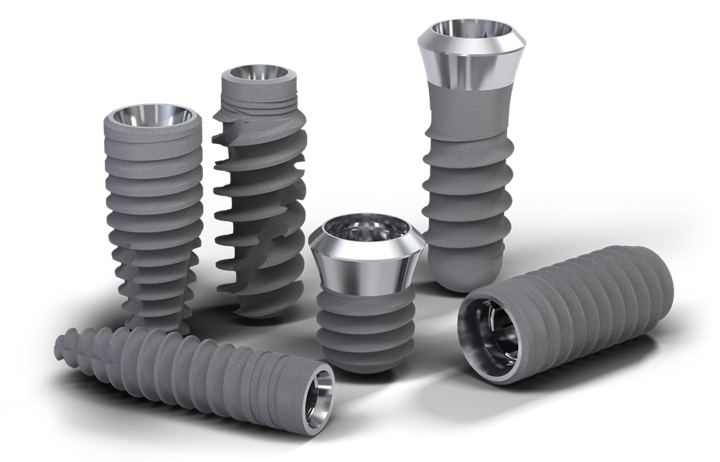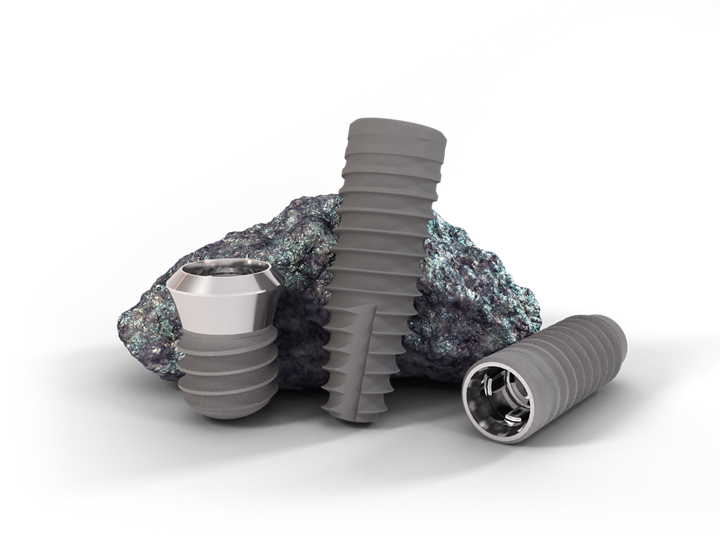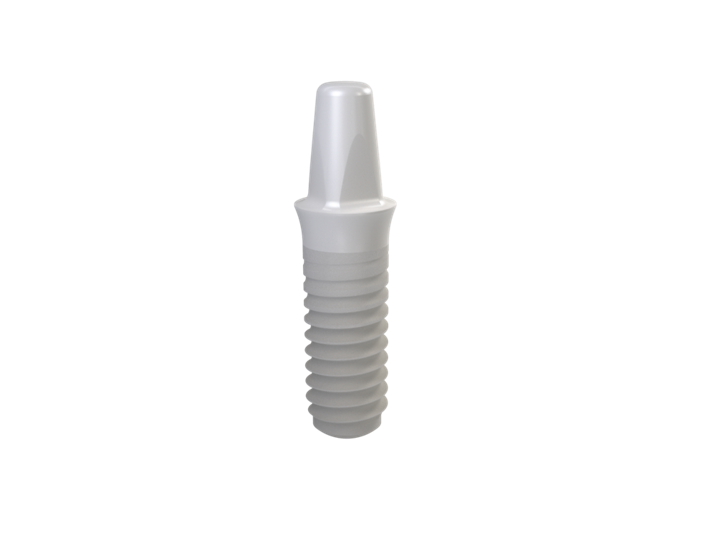
For every indication and every need.
Looking for the long-term proven standard, exceptional strength for reduced invasiveness*? In addition to our ground-breaking implant surfaces, we also offer a unique portfolio of different dental implant materials. For every indication and the patient’s specific needs and requirements.
*If guided bone regeneration can be avoided.

Straumann® Roxolid®
More than solid – Roxolid®. Reducing invasiveness.*
Roxolid® is a high-performance alloy composed of approximately 15 % zirconium and 85 % titanium, specifically designed by Straumann for use in implant dentistry. It features high tensile strength and excellent osseointegration capabilities, making it the material of choice for reduced invasiveness*. Its properties allow for greater confidence and more treatment options through the placement of reduced diameter implants, especially in cases where bone augmentation can be avoided.
Higher mechanical strength compared to titanium.1
Preserves vital structures and less invasive grafting procedures.2
More treatment options with smaller implants.
The excellent osseointegration properties of Roxolid® implants in combination with our SLActive® surface leads to reduced treatment complexity.
Less invasive treatment plans (= faster healing and less post-operative discomfort) can help to overcome many patient concerns.
The successful use of Roxolid® has been documented with up to 5-year follow-ups.3
Special conditions for Roxolid® implants: Straumann® Lifetime+ Guarantee.
How can we help you?
Contact Us to Learn More
Straumann collects your information to facilitate the commercial relationship, contact you regarding future product offerings and promotion and all other permissible business purposes. Please see our Privacy Policy for more information.
